Halo
Rob talks Halo with Gearbox's Randy Pitchford.
In the midst of all the hype surrounding Doom III and Half-Life 2, it's easy to forget that there are other first-person shooter games in development out there which are also worthy of your consideration; but even if you do cast the net a little wider, many gamers might not rate the forthcoming PC version of Halo as one of their most wanted games. After all, it's a console port, right? How many good console ports have you ever played on your PC?
Grinding the Gearbox
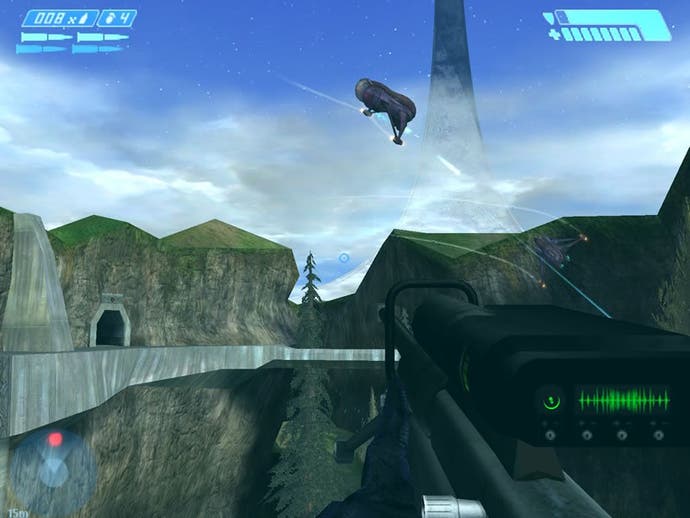
Consider the evidence for a moment, however. For a start, prior to becoming an Xbox exclusive title when Microsoft assimilated Bungie into the collective, Halo was certainly one of the biggest titles on the radar for the PC (yes, and the Mac - we know!). For another thing, it's not exactly been coolly received on the Xbox - it's the best-selling title on that platform (over three million served) and while not everyone is convinced that it's quite the revolutionary work of genius that quite a lot of over-excited fans hailed it as, it's certainly an excellent game.
Now the last piece of evidence; the PC version of Halo, which could so easily have been a quick and dirty port done in a matter of months, has in fact been worked on intensively over the past year by a large team at a company called Gearbox. You may remember them from little projects such as Half-Life: Opposing Force. Oh, and Counter-Strike. Which is why we're here in Dallas to speak to studio head Randy Pitchford and find out what they've done to Halo in the intervening 12 months, and why PC gamers spoiled by screenshots and movies of Valve and id's latest should sit up and take notice of an 18 month-old console game.
Under Pressure

There was, explains Pitchford, a lot of pressure on Gearbox when it came to working on Halo PC. We can see why - the massive success of the Xbox version would certainly throw harsh light on any flaws in the PC version, and let's not forget that there were plenty of angry fans out there when Halo became Xbox-exclusive, who would be keenly awaiting the results of the conversion process. As such, he tells us, the changes to the single-player element of the game focused on taking advantage of modern PC hardware rather than on tampering with the gameplay itself.
As such, Halo PC has plenty to recommend it on a technical level. Gearbox has spent plenty of time making sure that the game exploits everything available to it on your graphics hardware, and the game sports no fewer than four different graphics pipelines - there's a Pixel Shader 2.0 pipeline for hardware that's bang up to date, 1.4 and 1.1 pipelines for slightly older cards, and then a fixed function pipeline for those of you still chugging along on DirectX 7-era graphics hardware. If you're looking for a game to show off your graphics hardware, Halo PC may well be the first one to fulfil that need - and despite its console roots, the game is loaded down with graphics configuration options and scalability which should see it running smoothly on any decently modern system.
One of the major worries when you convert a console shooter to the PC is that the incredibly precise and responsive keyboard and mouse combination will see PC FPS junkies waltzing through the toughest situations the console game has to offer without breaking a sweat, whereas their joypad-wielding brethren would have found the same challenges controller-hurlingly difficult. If Gearbox hasn't tampered with the single-player game, won't this be a major problem for Halo PC?
Legendary ass-kicking
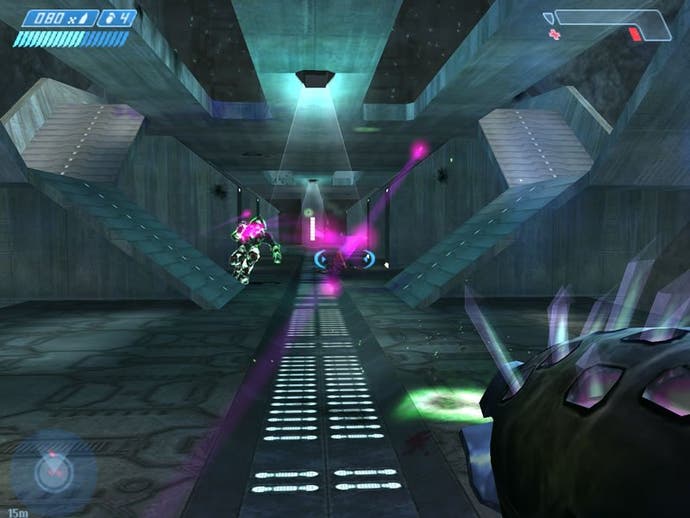
Not so, according to Pitchford. "We were concerned about that when we started," he admits, "and we even specced out a plan to change the difficulty balance." However, the team found that the simple step of removing the auto-aim assistance from the game (necessary to compensate for the inaccuracy of the joypad) ramped the difficulty up sufficiently, and no other balance changes were required. In fact, Halo PC may even be a bit more difficult than the console version - "Legendary difficulty still kicks your ass," grins Pitchford, and proceeds to obligingly demonstrate by getting his ass thoroughly kicked on Legendary difficulty.
The one other change to the single-player element of the game is the save system, which has been overhauled significantly from the Xbox version of the game. However, thankfully, the team hasn't chosen to fall into the trap of so many PC FPS games by allowing players to save anywhere they like - effectively letting people "cheat-save" their way through the game. Instead, the new save system uses the Halo checkpoint system - you can save at any point, and the game has a fully featured Save/Load screen where you can manage multiple save-games, but loading a save always dumps you back at the last checkpoint you passed. Checkpoints are pretty regularly spaced and you won't lose much time due to this approach, so it represents a good balance between the expectations of PC gamers used to save-anywhere, and maintaining the integrity of the excellent Halo narrative gameplay.
Another thing gamers will be pleased to know is maintained in the transition to the PC is Halo's fantastically quick load times - and in fact, this is improved significantly from the Xbox version. Each "sub-level" still loads very quickly indeed - you only notice a tiny jerk as you walk from one level to the next - but best of all, the "Loading" screens of the Xbox version have been completely eliminated, and Gearbox demonstrated full-size single-player and multiplayer levels loading up in a matter of a couple of seconds.
Caution: Warthog Crossing
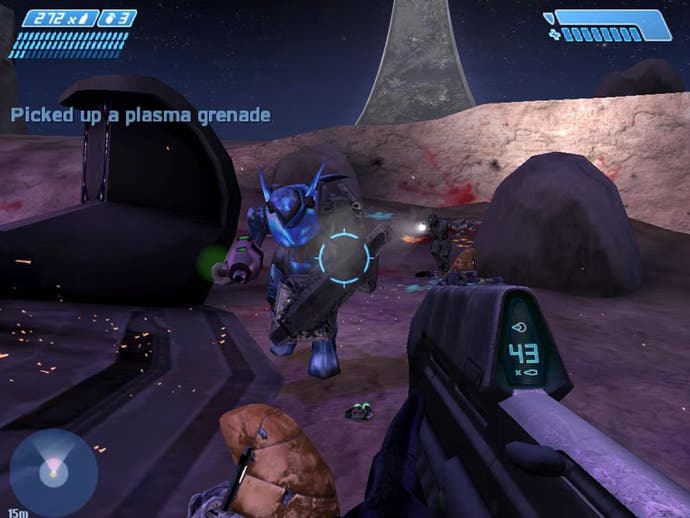
If Gearbox hasn't been playing around with the single-player game for the past year, what exactly have they been up to? The answer lies in the multiplayer element of the game. Halo, of course, predates Xbox Live, and while the game allows for a lot of LAN and split-screen options (and plenty of people have got it working over the Internet using some hacked-together software on their PCs), it's not designed for Internet play. This gave Gearbox something of a carte blanche when it came to adding new multiplayer features. "We went nuts," explains Pitchford simply through a huge grin. He's not joking.
The multiplayer modes on Halo PC are probably the most comprehensive set we've ever seen in a game - making the Unreal Tournament offerings of several different game types look positively stingy. Gearbox has not only created a brand new networking layer from the ground up (more about that in a minute), the company has put together new multiplayer maps, new weapons, new vehicles, new gametypes - and the ability to create your own gametypes by mixing and matching game features from other gametypes in an extremely powerful game setup system.
For those who haven't played multiplayer Halo before, the game lies somewhere in the middle ground between Unreal Tournament and Tribes, and is arguably better than either of the above. Large outdoor maps with buildings and tunnels scattered around them are the order of the day, and in general you'll be dividing your time between running around as a foot soldier and scooting about in one of the vehicles on offer - including tanks, jeeps, stationary turrets, hovercraft and airborne fighters. The physics on the vehicles are all uniformly excellent, and balanced very much towards the "fun" end of the scale rather than the "realism" end - much the same as the game's weapons.
Indeed, driving the Warthog jeep (which is a three man vehicle, with one driver, one rear gunner manning a chaingun or rocket launcher (new in the PC version), and one trooper riding shotgun) is one of the most fun things you can do in Halo - and recognising this, the game offers a variety of vehicular gametypes including Rally and Race options. However, there's plenty of fun to be had outside the jeeps - and the inclusion of new levels which encourage aerial dogfighting, and two new weapons which encourage long range fire-support (a massively powerful gun similar to the Tribes mortar) and close quarters corridor combat (a flamethrower), should hopefully extend the possibilities in multiplayer even further than the Xbox version did.
Customise, Accessorise...
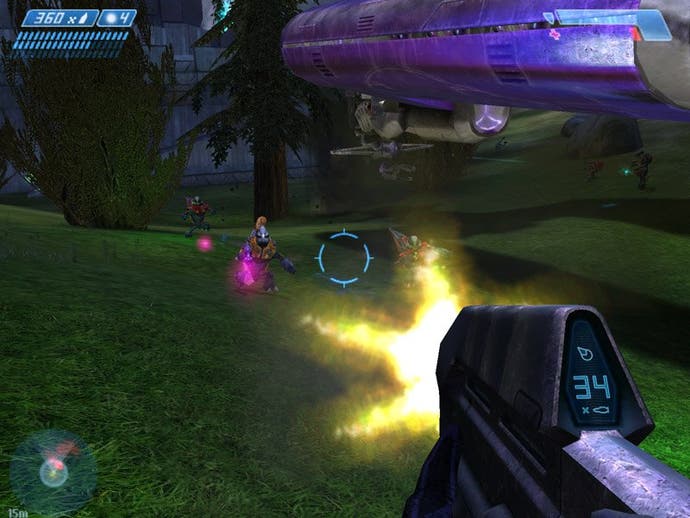
That game setup system we mentioned a moment ago deserves further explanation, and Pitchford is only too happy to oblige. He demonstrates a system which allows you to take a basic gametype - such as CTF, or King of the Hill, or whatever - and modify it completely by changing the weapons and vehicles available to players, the amount of health they spawn with, the objectives they need to complete, the number of lives each player has and a variety of even more complex options like whether vehicles respawn to their original positions when untouched for a certain amount of time or not.
This system seems to be incredibly powerful; according to Pitchford, setting up a Counter-Strike type gametype where one team has to bring an item (the bomb) to an objective which the other team has to defend (the bombsite) and each player only gets one life is simply a matter of clicking some buttons in the interface, rather than having to write a mod. "Until now, you either had to like the rules you had, or be a mod author," he explains. We expect to see plenty of servers running with insane gametypes for fun after the release of the game, and of course for the more serious players, the CPL will be releasing its own set of preferred settings for the game so you can be sure you're playing to the "professional standard". It's obligatory to wear a furrowed brow and serious expression while playing those settings, of course. And probably a tie.
One thing which is likely to upset a few people about the multiplayer options is the fact that the game doesn't allow for more than 16 players on a server. This isn't down to the networking code behind the game, according to Pitchford, but is due to the way the gameplay of the game works - the game has been designed from the ground up to support no more than 16 players, and the new maps have been designed with this in mind, rather than trying to cater for larger numbers of players. "16 players is more than enough given the way Halo is designed," he tells us, and we tend to agree - even with 10 players, the maps feel fast and frantic due to the speed with which players and vehicles move.
Of course, it's likely that one of the first thing mod authors will do is to create huge maps and break the 16 player limit - which brings us neatly to the topic of mods. In the true tradition of US FPS developers, Gearbox plans to release a full set of mod tools following the release of the game, starting with information and tools required for basic mapping and moving on to more complex tools. These tools, thanks to the way Halo is structured, ought to be powerful enough to implement just about any current Mod with ease, and Pitchford is hoping to see plenty of new ideas in Halo modifications - perhaps inspired by the game's own hard sci-fi setting.
You say Halo...
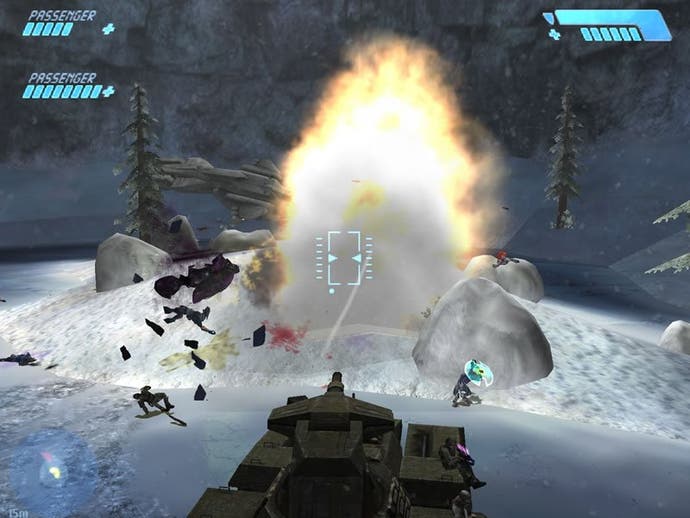
With Quakecon happening just a few miles away in downtown Dallas, it's still hard not to find Gearbox's enthusiasm for Halo PC infectious - and for good reason. Neither Doom III nor Half-Life 2 is focusing on the multiplayer aspects of the game, and we'll undoubtedly have to wait for the mod authors to catch up on the new technology before we see a great multiplayer game emerging from either of the new engines. Halo, however, has it all - a strong single-player game with a weighty sci-fi narrative underpinning it, and now an excellent and vastly configurable multiplayer system. What's more, although it can't quite match either of those forthcoming games in terms of graphics, Halo PC certainly looks very pretty - many of the textures seem to have been upgraded from their Xbox originals, and features such as bump-mapping, reflections and specular highlights make the game look absolutely fantastic - certainly ahead of the likes of Unreal Tournament 2003, if not quite at the levels of Doom III.
Questions remain to be answered, of course. The netcode is an unknown quantity, although Gearbox's experience with multiplayer games in the past is reassuring in this context, and the level of effort they've put into the netcode also helps - according to Pitchford, they spent more time on the netcode than on any other element of the conversion. The lack of a Linux dedicated server for the game (it's being published by Microsoft, after all) is also likely to have some server admins pulling their hair out and could hamper support for the game from online gaming providers. And the issue of performance is also always present - "we're pushing the hardware pretty hard," says Pitchford. "For what it's doing, it's very fast - it's not wasting time on the CPU or the GPU. Very very optimal."
...we say Goodbye
We'll hopefully be able to answer more of those questions shortly, since we walked back out into the scorching Texas sun clutching a beta CD of Halo PC in our sweaty palms. Look out for a full hands-on preview of the game - including the multiplayer - at some point in the near future... And in the meanwhile, add a new game to your "most wanted" list. Last year's console FPS hit may be about to become this autumn's biggest PC multiplayer title.






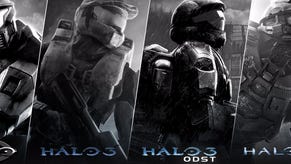





.png?width=291&height=164&fit=crop&quality=80&format=jpg&auto=webp)



